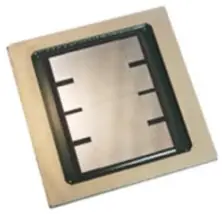It isn’t about “how much trouble” it is. A lot of things in the industry have to be decided sometimes months if not years ahead of time.
Some things about Zen 3 were planned years ago, including that it will have 3D capability.
Other things - fine tuning it - are quite new. First rumors of B2 stepping of Zen 3 main chiplet just came out late early May, IIRC, saying that it will just improve manufacturability.
Not much attention was paid to it, and the news sort of disappeared from view, and then AMD hit us with Zen 3D announcement. And not many people are connecting the dots here. That B2 stepping is improving manufacturability options of 3D stacking as well.
Another thing to keep in mind: This one Zen 3 die will be making close to $2 billion per quarter for AMD in revenue. It only makes sense that AMD has optimized the hell out of it and covered most of the possibilities.
It might be that the process makes it easy to stack a different number of die and it might be that number of die is something that was decided a long time ago and is not easily changeable now. I don’t know how much trouble it is to adjust for different heights. I suspect that they will attempt to keep the height the same such that the stacked die and non-stacked die are interchangeable, so 1, 2, and 4 would all have to be polished down by different amounts.
In my non-expert opinion, these are trivial issues to solve. The layers of L3 are extremely thin, thinner than most people imagine.
And thinning the base die may be the last step before stacking L3.
But this is precisely what I had in mind when I posted the comment. Lisa Su has a goal for for AMD to be the leader in High Performance Computing.
Can you imagine an employee coming back to her saying: "Sorry, we can't be the leader of High Performance computing because we have trouble figuring out different heights we will need for different levels of stacking."
I still doubt that they will have a separate 2 layer part. I don’t know how much trouble it would be to manufacture, but if they can’t win with 192 MB 5950X3D (2 CCD x 96 MB per CCD) then I don’t know if a 320 MB (2 CCD x 160 MB per CCD) cpu will do it either.
I don't think AMD needs to segment itself to death with different levels of stacking. AMD just needs one that wins the gaming (at worst ties ADL), and one that has Milan X competing well with Sapphire Rapids
All of the major manufactures have been hit with issues where decisions made moths or years ago did not turn out to be the best choices. They have to make decisions on a lot of features years in advance, so if they guess right, they look really good. Guessing wrong can be a disaster though. Intel seems to have thought that they could use monolithic die up until they move to die stacking which is why they have no completion to most Epyc parts right now. How quickly could intel have fixed that? If thier process tech was yielding fine, it still would have taken a few years to shift to MCM or stacked designs.
AMD hit the home run with chiplets and with stacking. Which is why I don't think the tiny challenges (in comparison), like how many layers, are going to trip up AMD.
We don’t really know that much about TSMC’s SoIC stacking, but I am still thinking that only single layer will be making it to consumers level parts. It would be interesting to see whether game performance still scales with larger cache parts. I think the 4 high stack Milan-X3D will be showing up a bit later than the single layer stacked parts anyway.
Like I said in the previous post, if 1 level of L3 is good enough to just narrowly lose the performance crown to ADL, there is no point in releasing it.
AMD has several cards to play, and a lot of time to decide which card to play.
So when you say single layer for consumer parts, is like Lisa making the decision now, without knowing where ADL is, and going on a 6 month sailing vacation around the world.
More likely, AMD will watch for ADL performance leaks and info and will make the decision (late) based on that. Will play the card best for the scenario at hand.
With Milan X, that one will most likely be based on best long term strategy than short term gamesmanship. For that, I think AMD needs to have a way to validate for all possible L3 scenarios, so that going forward, AMD can sell any semi-custom configuration customers (with deep pockets) ask for.







